By Alex Trukan
Medium pressure is a defensive strategy based on setting up a confrontation line (area of the pitch from which the team out of possession starts to apply pressing) around half way line. It is the most popular, yet not often very effective type of pressing. Many players associate this type of pressing with a more static and passive approach which is not as aggressive as high (where rewards when regained are high) or low (where danger if not effective is high) press. The reality is, however slightly different. Applying medium pressure leaves a lot of space in behind of the opposition back line if possession is regained, therefore, providing a great opportunity to counter attack with quick forwards penetration. From the opposite side, if the strikers’ and midfielders’ blocks will get beaten by the opposition, there will not be a lot of players left in behind the ball, inviting the opposition to create scoring chances.
Strikers’ unit
When the ball is circulating on the opposition half, the first confrontation unit would be strikers’. Until the ball gets passed through the half way line, strikers’ main responsibility is to slide and screen blocking the options into midfield preventing forward play through the centre. They should move and work together (start together, move together, arrive together). The main priority is to prevent the opportunities to play through the central area and force the opposition to go wide, however that might vary depending on the team’s tactics.
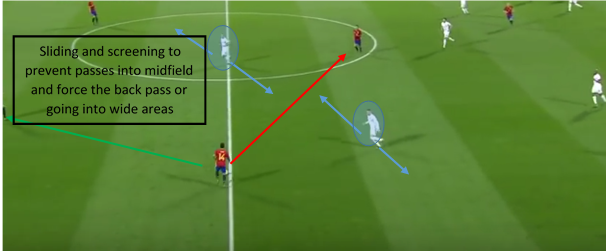
Occassionally, strikers might start to apply pressure on the opposition half if the ball is already in wide area and the team is organised. It would be a great opportunity to force the opposition wider and close them down by applying a pressing trap. Body positions, angles of approach as well as appropriate support and cover are crucial.
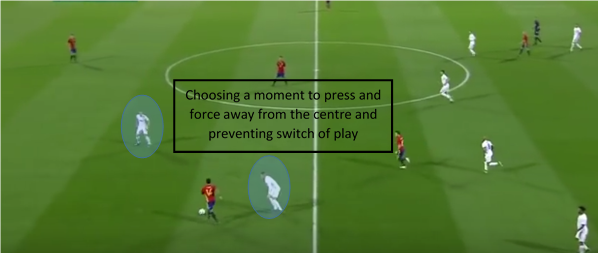
Once the ball is played to the opposition full back in the wide area, striker’s role is to cut the options to come back and switch play and isolate the opposition on the wide side of the pitch. Strikers will therefore try to get into a more vertical position rather than being flat. The crucial aspect is to cut the options to the nearest central defender and central midfielder. Here, the role of the midfielders also starts who apply pressure on the ball (wide midfielder), support (central midfielders) and cover.
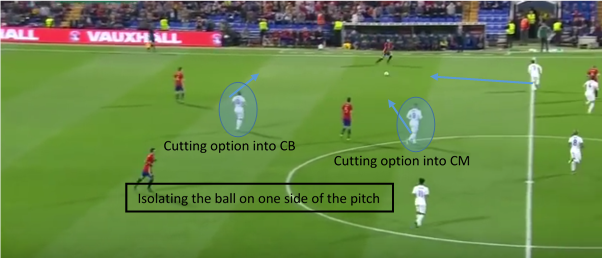
Once the ball is played deeper, and the team is forced to drop back, strikers should be able to cooperate with midfielders. What will often happen is opposition midfielder making a forward run without the ball and vertically interchanging positions with another midfielder coming from higher positions. In this case, striker would follow the runner and one of the midfielders would apply pressure on the ball. Rest of the team works as a compact block, reducing spaces in between them and providing support and cover around and away from the ball.
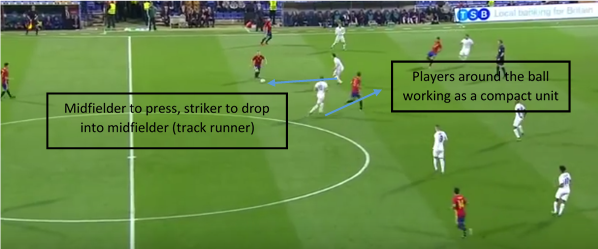
Midfielders’ unit
The role of the wide midfielder on the ball side is to apply pressure on the ball. He might choose to show wide as well as into the middle (needs to be agreed and coordinated with the whole team). Second midfielder should be quick and support him on the slight angle and at the same time cut the options to pass into central midfielder. Third and fourth midfielders in a unit narrow up and stay in line with the supporting midfielder.
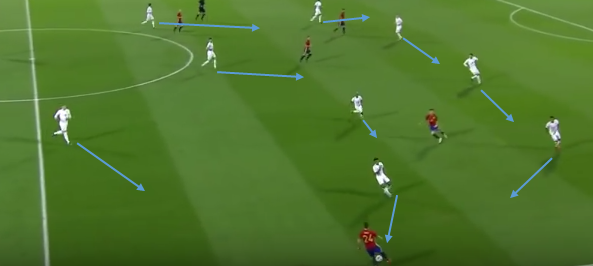
If the ball is played over the midfield unit, their body position should allow them to quickly turn and adjust positions. In this case, the role of the back unit is crucial. Distances between midfield and back units should allow them to support immediately as well as protect the spaces in behind them. Midfielders should be ready to pick up any second balls from the defenders.
[wpsharely id="2988"][/wpsharely]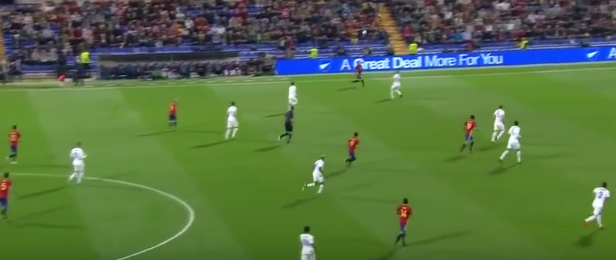
If the opposition manages to break through the units, medium press might be switched into a deep defending on the own half, where similar roles and responsibilities apply but the pressure as well as marking around the ball is tighter. Upon regaining possession that will provide a perfect opportunity to exploit spaces in behind the opposition back line.
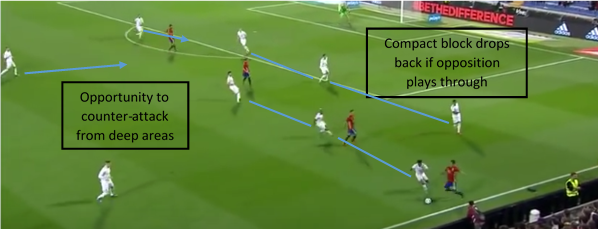
When applying medium pressure, the players should have clear understanding of their jobs and responsibilities, as working as a team in a highly tactical sense is crucial. Also, making sure the players know when and where start to press and mark tight will ensure active approach, avoiding static defending. From the mental point of view, concentration, discipline and patience are important traits to look for in players.
By Alex Trukan, Development Coach, Nottingham Forest
@AlexTrukan


